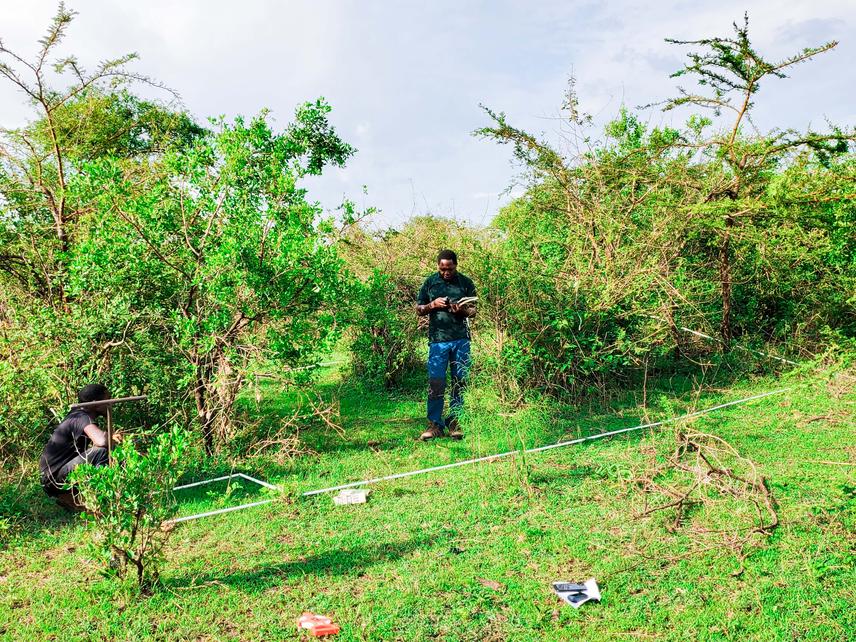Rudolf Filemon Mremi
The Serengeti ecosystem, a global biodiversity hotspot and World Heritage Site in East Africa, is increasingly threatened by invasive plant species (IPS). Although protected area (PA) boundaries serve as natural filters to plant invasion, PAs within the Serengeti ecosystem are becoming more vulnerable. IPS invasions in the ecosystem are linked to detrimental impacts on native biodiversity and disrupt key ecosystem functions, including forage production for herbivores as well as pollination services. Understanding these dynamics is essential for guiding management efforts aimed at halting biodiversity loss and ensuring the continuity of ecosystem functions.

Fieldwork involving the sampling of invasive plants in the Serengeti ecosystem. © Rudolf Mremi.
This project aims to identify the drivers of IPS spread, quantify the extent of invasion, and evaluate its ecological impacts—especially at the boundaries between PAs and surrounding human-dominated landscapes in the Serengeti ecosystem. The study will advance our understanding of invasion levels within PAs and neighbouring areas, as well as their effects on biodiversity and ecosystem functioning. These findings are critical to helping conservation decision-makers formulate proactive, evidence-based strategies and targeted control interventions within the ecosystem.